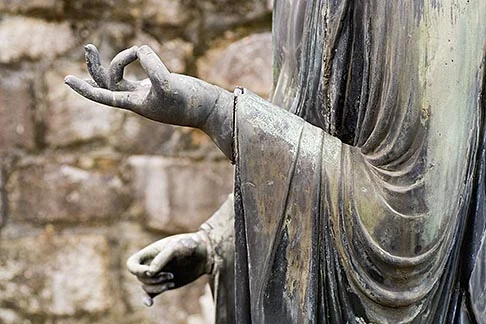“Speaking then, in the practical field of meditation, we must say that what we seek is precisely to go beyond the mind and feelings.”
Phases of Gnostic Meditation
Asana
"Asana" is the posture of the physical body. There exist different postures for the Meditation exercise, for example: the posture of the five pointed star, the dead man posture, the lotus posture, semilotus, Siddhasana or perfect posture (which consists of creating a magnetic circle with the thumb and the index finger, supporting the back of the hands over the knees); Vajrasana or diamond posture (just like the Incas and the Japanese, with the hands leaning on the thighs and the torso resting over the heels), etc. The important thing regardless of the Asana or posture that is adopted is to maintain a straight spinal column.
Pranayama
The science of the control of breathing. "Prana" is life, a product of the electro-sexual force. Prana beats in each atom as it beats in each Sun. Prana is the Vital Air. Yama: "Refers to the perfection of ethics." Pranayama is the art of learning how to breathe.
Pratyahara
"Pratiahara". Abstraction of the senses. It is to learn how to withdraw the mind from the senses to open the way for the Consciousness. However, one of the rules of Pratyahara is to reach the invisible or abstract by means of the visible or concrete, which in fact means that we should concentrate the attention on a point that is normally known by the Sensorial Mind and remain there until, first, getting to know the dual nature of thoughts and feelings, and later transcend that struggle of the opposites..
Dharana
When we separate from the Sensual Mind, concentration spontaneously emerges, which is the state of Dharana. Dharana is not the result of a stubborn desire. Dharana emerges from the depths of the Consciousness as a mediator between the absolute and the relative.
Dhyana
"Dhiana" is Meditation. In that state the Conscience has the capacity to know in any direction.
Shamadi
A profound state of Meditation. In such a state the Consciousness is dissolved like a drop in the Great Ocean and participates of the plurality of the Universe.
Samael Aun Weor
